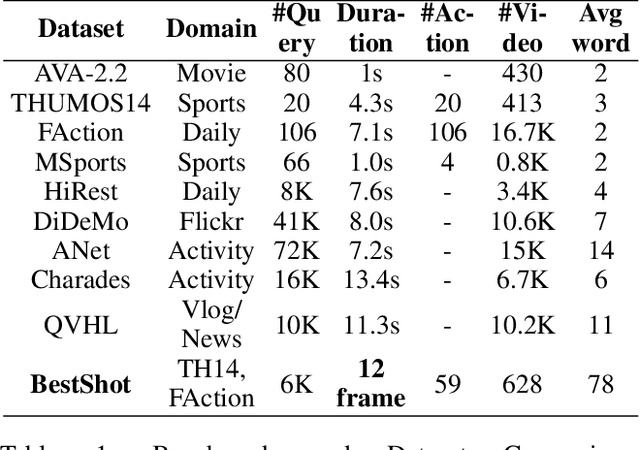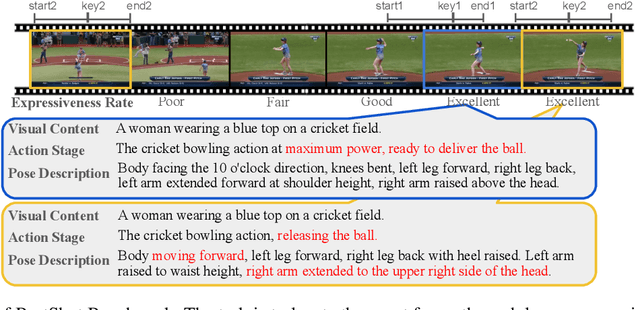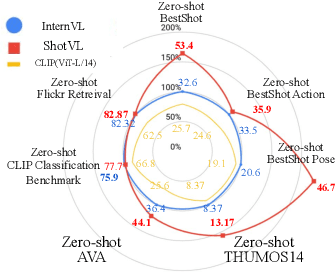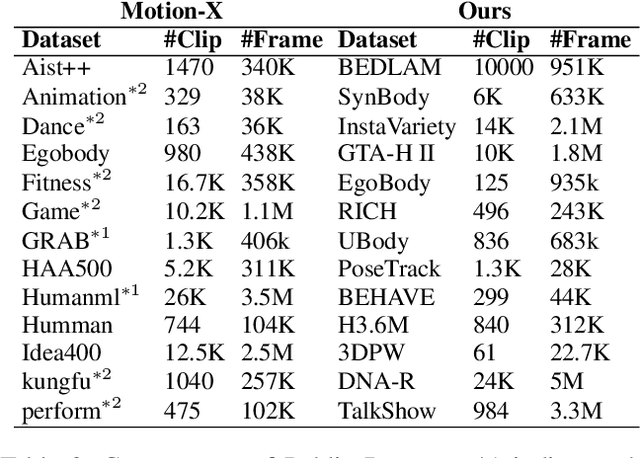Jiayi Wu
NavMoE: Hybrid Model- and Learning-based Traversability Estimation for Local Navigation via Mixture of Experts
Sep 16, 2025Abstract:This paper explores traversability estimation for robot navigation. A key bottleneck in traversability estimation lies in efficiently achieving reliable and robust predictions while accurately encoding both geometric and semantic information across diverse environments. We introduce Navigation via Mixture of Experts (NAVMOE), a hierarchical and modular approach for traversability estimation and local navigation. NAVMOE combines multiple specialized models for specific terrain types, each of which can be either a classical model-based or a learning-based approach that predicts traversability for specific terrain types. NAVMOE dynamically weights the contributions of different models based on the input environment through a gating network. Overall, our approach offers three advantages: First, NAVMOE enables traversability estimation to adaptively leverage specialized approaches for different terrains, which enhances generalization across diverse and unseen environments. Second, our approach significantly improves efficiency with negligible cost of solution quality by introducing a training-free lazy gating mechanism, which is designed to minimize the number of activated experts during inference. Third, our approach uses a two-stage training strategy that enables the training for the gating networks within the hybrid MoE method that contains nondifferentiable modules. Extensive experiments show that NAVMOE delivers a better efficiency and performance balance than any individual expert or full ensemble across different domains, improving cross- domain generalization and reducing average computational cost by 81.2% via lazy gating, with less than a 2% loss in path quality.
Integrating LLM-Derived Multi-Semantic Intent into Graph Model for Session-based Recommendation
Jul 27, 2025Abstract:Session-based recommendation (SBR) is mainly based on anonymous user interaction sequences to recommend the items that the next user is most likely to click. Currently, the most popular and high-performing SBR methods primarily leverage graph neural networks (GNNs), which model session sequences as graph-structured data to effectively capture user intent. However, most GNNs-based SBR methods primarily focus on modeling the ID sequence information of session sequences, while neglecting the rich semantic information embedded within them. This limitation significantly hampers model's ability to accurately infer users' true intention. To address above challenge, this paper proposes a novel SBR approach called Integrating LLM-Derived Multi-Semantic Intent into Graph Model for Session-based Recommendation (LLM-DMsRec). The method utilizes a pre-trained GNN model to select the top-k items as candidate item sets and designs prompts along with a large language model (LLM) to infer multi-semantic intents from these candidate items. Specifically, we propose an alignment mechanism that effectively integrates the semantic intent inferred by the LLM with the structural intent captured by GNNs. Extensive experiments conducted on the Beauty and ML-1M datasets demonstrate that the proposed method can be seamlessly integrated into GNNs framework, significantly enhancing its recommendation performance.
Single-Step Latent Diffusion for Underwater Image Restoration
Jul 10, 2025Abstract:Underwater image restoration algorithms seek to restore the color, contrast, and appearance of a scene that is imaged underwater. They are a critical tool in applications ranging from marine ecology and aquaculture to underwater construction and archaeology. While existing pixel-domain diffusion-based image restoration approaches are effective at restoring simple scenes with limited depth variation, they are computationally intensive and often generate unrealistic artifacts when applied to scenes with complex geometry and significant depth variation. In this work we overcome these limitations by combining a novel network architecture (SLURPP) with an accurate synthetic data generation pipeline. SLURPP combines pretrained latent diffusion models -- which encode strong priors on the geometry and depth of scenes -- with an explicit scene decomposition -- which allows one to model and account for the effects of light attenuation and backscattering. To train SLURPP we design a physics-based underwater image synthesis pipeline that applies varied and realistic underwater degradation effects to existing terrestrial image datasets. This approach enables the generation of diverse training data with dense medium/degradation annotations. We evaluate our method extensively on both synthetic and real-world benchmarks and demonstrate state-of-the-art performance. Notably, SLURPP is over 200X faster than existing diffusion-based methods while offering ~ 3 dB improvement in PSNR on synthetic benchmarks. It also offers compelling qualitative improvements on real-world data. Project website https://tianfwang.github.io/slurpp/.
Position: Simulating Society Requires Simulating Thought
Jun 08, 2025Abstract:Simulating society with large language models (LLMs), we argue, requires more than generating plausible behavior -- it demands cognitively grounded reasoning that is structured, revisable, and traceable. LLM-based agents are increasingly used to emulate individual and group behavior -- primarily through prompting and supervised fine-tuning. Yet they often lack internal coherence, causal reasoning, and belief traceability -- making them unreliable for analyzing how people reason, deliberate, or respond to interventions. To address this, we present a conceptual modeling paradigm, Generative Minds (GenMinds), which draws from cognitive science to support structured belief representations in generative agents. To evaluate such agents, we introduce the RECAP (REconstructing CAusal Paths) framework, a benchmark designed to assess reasoning fidelity via causal traceability, demographic grounding, and intervention consistency. These contributions advance a broader shift: from surface-level mimicry to generative agents that simulate thought -- not just language -- for social simulations.
Power-Law Decay Loss for Large Language Model Finetuning: Focusing on Information Sparsity to Enhance Generation Quality
May 22, 2025Abstract:During the finetuning stage of text generation tasks, standard cross-entropy loss treats all tokens equally. This can lead models to overemphasize high-frequency, low-information tokens, neglecting lower-frequency tokens crucial for specificity and informativeness in generated content. This paper introduces a novel loss function, Power-Law Decay Loss (PDL), specifically designed to optimize the finetuning process for text generation. The core motivation for PDL stems from observations in information theory and linguistics: the informativeness of a token is often inversely proportional to its frequency of occurrence. PDL re-weights the contribution of each token in the standard cross-entropy loss based on its frequency in the training corpus, following a power-law decay. Specifically, the weights for high-frequency tokens are reduced, while low-frequency, information-dense tokens are assigned higher weights. This mechanism guides the model during finetuning to focus more on learning and generating tokens that convey specific and unique information, thereby enhancing the quality, diversity, and informativeness of the generated text. We theoretically elaborate on the motivation and construction of PDL and discuss its potential applications and advantages across various text generation finetuning tasks, such as abstractive summarization, dialogue systems, and style transfer.
MAS-KCL: Knowledge component graph structure learning with large language model-based agentic workflow
May 20, 2025Abstract:Knowledge components (KCs) are the fundamental units of knowledge in the field of education. A KC graph illustrates the relationships and dependencies between KCs. An accurate KC graph can assist educators in identifying the root causes of learners' poor performance on specific KCs, thereby enabling targeted instructional interventions. To achieve this, we have developed a KC graph structure learning algorithm, named MAS-KCL, which employs a multi-agent system driven by large language models for adaptive modification and optimization of the KC graph. Additionally, a bidirectional feedback mechanism is integrated into the algorithm, where AI agents leverage this mechanism to assess the value of edges within the KC graph and adjust the distribution of generation probabilities for different edges, thereby accelerating the efficiency of structure learning. We applied the proposed algorithm to 5 synthetic datasets and 4 real-world educational datasets, and experimental results validate its effectiveness in learning path recognition. By accurately identifying learners' learning paths, teachers are able to design more comprehensive learning plans, enabling learners to achieve their educational goals more effectively, thus promoting the sustainable development of education.
ComplexFormer: Disruptively Advancing Transformer Inference Ability via Head-Specific Complex Vector Attention
May 15, 2025Abstract:Transformer models rely on self-attention to capture token dependencies but face challenges in effectively integrating positional information while allowing multi-head attention (MHA) flexibility. Prior methods often model semantic and positional differences disparately or apply uniform positional adjustments across heads, potentially limiting representational capacity. This paper introduces ComplexFormer, featuring Complex Multi-Head Attention-CMHA. CMHA empowers each head to independently model semantic and positional differences unified within the complex plane, representing interactions as rotations and scaling. ComplexFormer incorporates two key improvements: (1) a per-head Euler transformation, converting real-valued query/key projections into polar-form complex vectors for head-specific complex subspace operation; and (2) a per-head adaptive differential rotation mechanism, exp[i(Adapt(ASmn,i) + Delta(Pmn),i)], allowing each head to learn distinct strategies for integrating semantic angle differences (ASmn,i) with relative positional encodings (Delta(Pmn),i). Extensive experiments on language modeling, text generation, code generation, and mathematical reasoning show ComplexFormer achieves superior performance, significantly lower generation perplexity , and improved long-context coherence compared to strong baselines like RoPE-Transformers. ComplexFormer demonstrates strong parameter efficiency, offering a more expressive, adaptable attention mechanism.
VQ-Logits: Compressing the Output Bottleneck of Large Language Models via Vector Quantized Logits
May 15, 2025Abstract:Large Language Models (LLMs) have achieved remarkable success but face significant computational and memory challenges, particularly due to their extensive output vocabularies. The final linear projection layer, mapping hidden states to vocabulary-sized logits, often constitutes a substantial portion of the model's parameters and computational cost during inference. Existing methods like adaptive softmax or hierarchical softmax introduce structural complexities. In this paper, we propose VQ-Logits, a novel approach that leverages Vector Quantization (VQ) to drastically reduce the parameter count and computational load of the LLM output layer. VQ-Logits replaces the large V * dmodel output embedding matrix with a small, shared codebook of K embedding vectors (K << V ). Each token in the vocabulary is mapped to one of these K codebook vectors. The LLM predicts logits over this compact codebook, which are then efficiently "scattered" to the full vocabulary space using the learned or preassigned mapping. We demonstrate through extensive experiments on standard language modeling benchmarks (e.g., WikiText-103, C4) that VQ-Logits can achieve up to 99% parameter reduction in the output layer and 6x speedup in logit computation, with only a marginal 4% increase in perplexity compared to full softmax baselines. We further provide detailed ablation studies on codebook size, initialization, and learning strategies, showcasing the robustness and effectiveness of our approach.
PA-RAG: RAG Alignment via Multi-Perspective Preference Optimization
Dec 19, 2024



Abstract:The emergence of Retrieval-augmented generation (RAG) has alleviated the issues of outdated and hallucinatory content in the generation of large language models (LLMs), yet it still reveals numerous limitations. When a general-purpose LLM serves as the RAG generator, it often suffers from inadequate response informativeness, response robustness, and citation quality. Past approaches to tackle these limitations, either by incorporating additional steps beyond generating responses or optimizing the generator through supervised fine-tuning (SFT), still failed to align with the RAG requirement thoroughly. Consequently, optimizing the RAG generator from multiple preference perspectives while maintaining its end-to-end LLM form remains a challenge. To bridge this gap, we propose Multiple Perspective Preference Alignment for Retrieval-Augmented Generation (PA-RAG), a method for optimizing the generator of RAG systems to align with RAG requirements comprehensively. Specifically, we construct high-quality instruction fine-tuning data and multi-perspective preference data by sampling varied quality responses from the generator across different prompt documents quality scenarios. Subsequently, we optimize the generator using SFT and Direct Preference Optimization (DPO). Extensive experiments conducted on four question-answer datasets across three LLMs demonstrate that PA-RAG can significantly enhance the performance of RAG generators. Our code and datasets are available at https://github.com/wujwyi/PA-RAG.
ShotVL: Human-Centric Highlight Frame Retrieval via Language Queries
Dec 17, 2024



Abstract:Existing works on human-centric video understanding typically focus on analyzing specific moment or entire videos. However, many applications require higher precision at the frame level. In this work, we propose a novel task, BestShot, which aims to locate highlight frames within human-centric videos via language queries. This task demands not only a deep semantic comprehension of human actions but also precise temporal localization. To support this task, we introduce the BestShot Benchmark. %The benchmark is meticulously constructed by combining human detection and tracking, potential frame selection based on human judgment, and detailed textual descriptions crafted by human input to ensure precision. The benchmark is meticulously constructed by combining human-annotated highlight frames, detailed textual descriptions and duration labeling. These descriptions encompass three critical elements: (1) Visual content; (2) Fine-grained action; and (3) Human Pose Description. Together, these elements provide the necessary precision to identify the exact highlight frames in videos. To tackle this problem, we have collected two distinct datasets: (i) ShotGPT4o Dataset, which is algorithmically generated by GPT-4o and (ii) Image-SMPLText Dataset, a dataset with large-scale and accurate per-frame pose description leveraging PoseScript and existing pose estimation datasets. Based on these datasets, we present a strong baseline model, ShotVL, fine-tuned from InternVL, specifically for BestShot. We highlight the impressive zero-shot capabilities of our model and offer comparative analyses with existing SOTA models. ShotVL demonstrates a significant 52% improvement over InternVL on the BestShot Benchmark and a notable 57% improvement on the THUMOS14 Benchmark, all while maintaining the SOTA performance in general image classification and retrieval.
 Add to Chrome
Add to Chrome Add to Firefox
Add to Firefox Add to Edge
Add to Edge